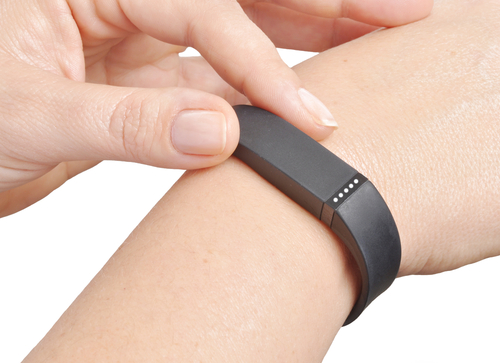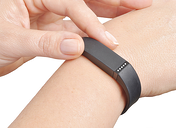Discovering Your Flywheel Marketing Metric

February 23, 2015

What FitBit Can Teach Us About Marketing ROI
I like marketing metrics. A lot.
Just last week, I found myself in an internal meeting "shouting out" a colleague by saying, "Let's clap it up for that stellar spreadsheet. Those formulas and metrics were awesome!" We measure everything under the sun in our business. I find the amount and type of things we can measure to be quite extraordinary today and can greatly aide marketing decision making.
Sometimes, though, the sheer volume of variables and metrics can lead to overload and inaction. Add to this the marketing gurus who are always coming out with the newest thing. It can all be too much at times.To combat feeling dazed by decisions, marketers need to determine their "flywheel" metric, or the specific metric that drives the engine of their business success. In this sense, marketers can learn a lot about identifying their flywheel metric from FitBit. FitBit is a device you wear like a watch that syncs automatically with an app. It automatically measures at least nine data points automatically in real time. For a tenth data point, you just have to enter the food you consume each day.
 In addition to marketing metrics, I really like health. In particular, I’m concerned about my health and the health of others in my life. FitBit is a dream. It provides real time data, mostly automated, on your health! Fantastic! When I received my FitBit for Christmas, I was impressed with the sheer amount of data. Quickly, though, I decided that there were too many metrics and I would focus on only one: The net calories burned versus those consumed. It sounds simple, but I've never had actual data on the calories-burned side and never had a convenient way to track the total consumed. My goal was to burn 500 more calories each day than I consume.
In addition to marketing metrics, I really like health. In particular, I’m concerned about my health and the health of others in my life. FitBit is a dream. It provides real time data, mostly automated, on your health! Fantastic! When I received my FitBit for Christmas, I was impressed with the sheer amount of data. Quickly, though, I decided that there were too many metrics and I would focus on only one: The net calories burned versus those consumed. It sounds simple, but I've never had actual data on the calories-burned side and never had a convenient way to track the total consumed. My goal was to burn 500 more calories each day than I consume.
I focused all my energy on that one metric. I looked at it constantly and started to think about how to burn more calories. It turns out that if I sit at my desk all day, I burn 700 fewer calories than if I even get in some light exercise and extra walking. It also drove me to relentlessly thinking about how many calories were in everything I ate. For instance, eating at most restaurants will yield about four times as many calories as one might assume. It even led to some awkward questions, such as when I asked a colleague at a party, "How many calories do you think are in that meatball?"
Thinking about calories made me very conscious of what I ate. More importantly, it made me think about the utility or value I receive from what I eat. That fourth piece of pizza for 350 calories when I'm full? Maybe I'll skip that. The tiny bite of chocolate for 40 calories on occasion? Game on! Having a banana instead of a power bar for a net savings of 100 calories? Sounds like a good trade.
So what does this have to do with marketing and big data?
Many marketers are either measuring everything under the sun or very little at all. Marketing automation systems and CRMs capture a lot of data. The key is not the pure quantity and number of metrics, but determining which metrics drive the gears of success and being hyper focused on improving those metrics. It is often better to start measuring a small number of data points really well and consistently. Think of this as working to determine your "flywheel metric". This allows for focus and improvement versus a lot of un-actionable fancy charts!
For marketers, the most important metrics will vary for each company, but here are two of my favorites:
- SQL to closed business by representative – This is my favorite metric because there is usually a wide variance between reps and because improving this conversion rate has the biggest impact on revenue. It is also the easiest to measure, as any sales leader worth his or her weight will focus heavily on this. However, many sales leaders may not break out marketing-generated leads versus sales-generated leads in their review. One note here is to avoid concluding that reps who close the least marketing leads are the worst reps. Oftentimes, your best reps have the least time for new leads.
- Website visitors to responders – This is my second favorite metric because it is at the very top of the marketing funnel. It measures how interesting your business is and whether the people who should find you interesting know that you exist. From this metric, you can learn how well your website is designed and how compelling your content is to your visitors. You can continue to tweak site design and content to improve results.
There are many other marketing metrics that may be more meaningful to you and your company. The key is to determine your flywheel metric and develop a laser-focus on improving this.
What's your flywheel marketing metric?
(And in case you are wondering, I lost all my holiday weight in five weeks and am still having fun with my FitBit!)

Comments